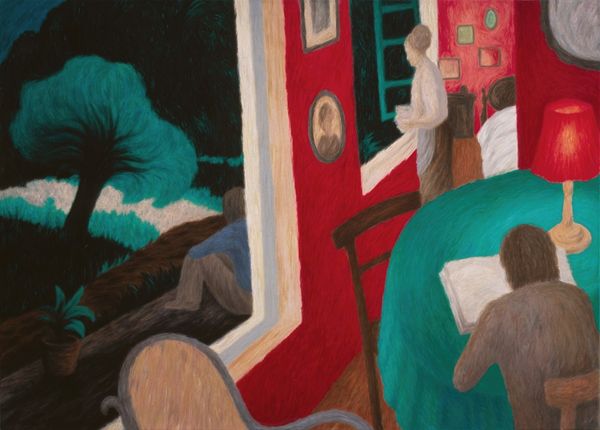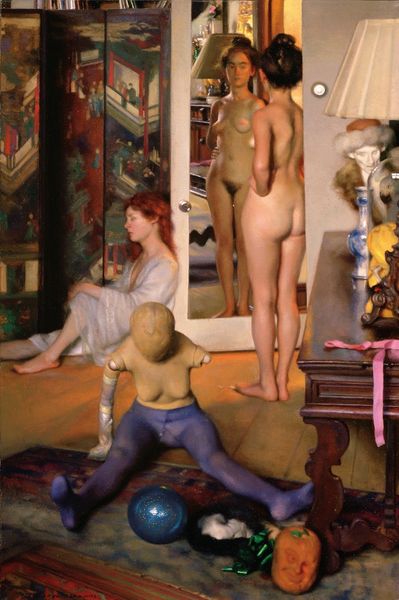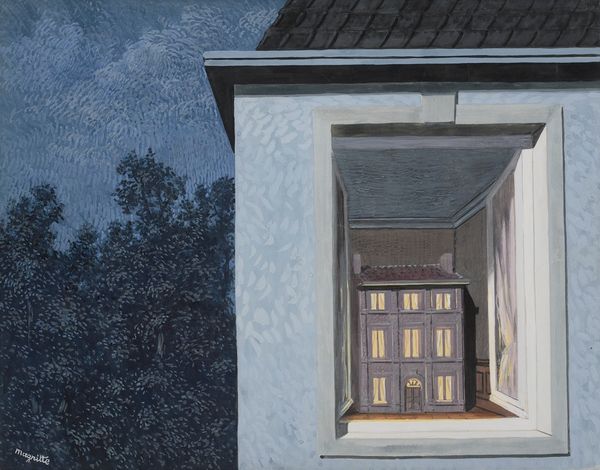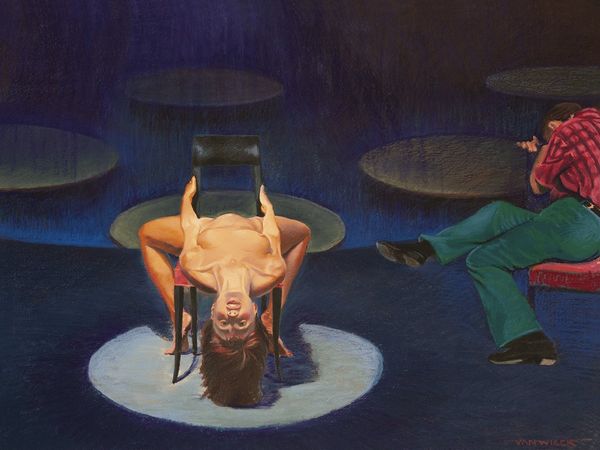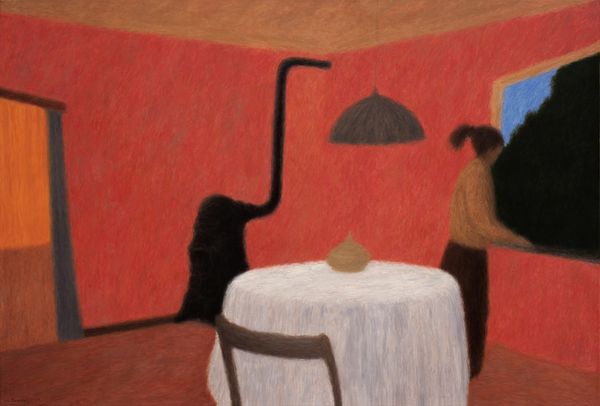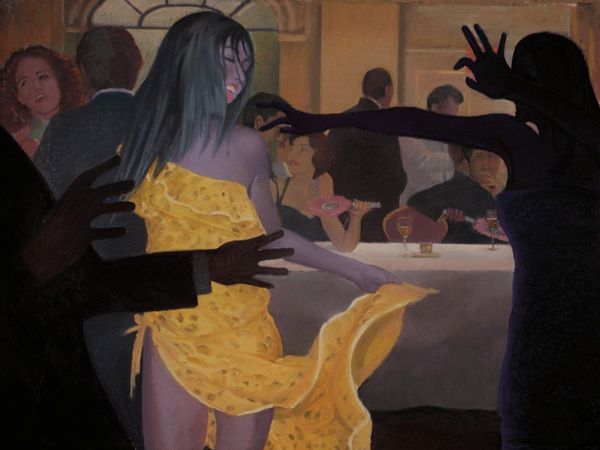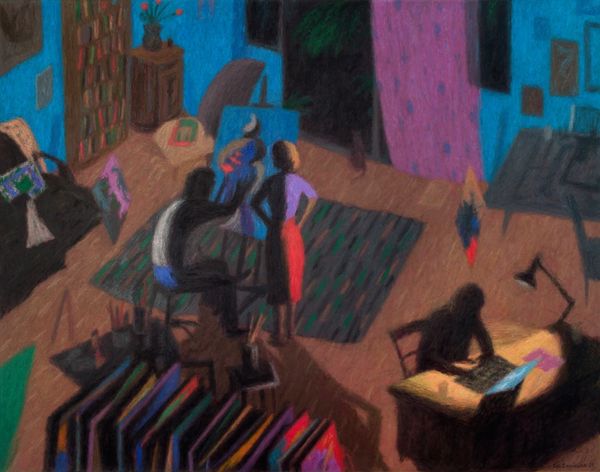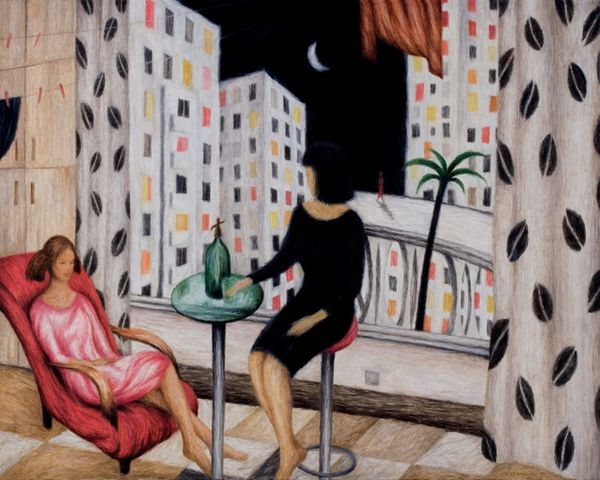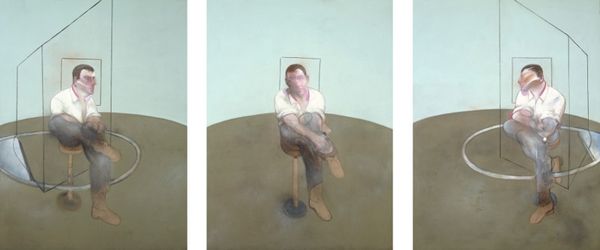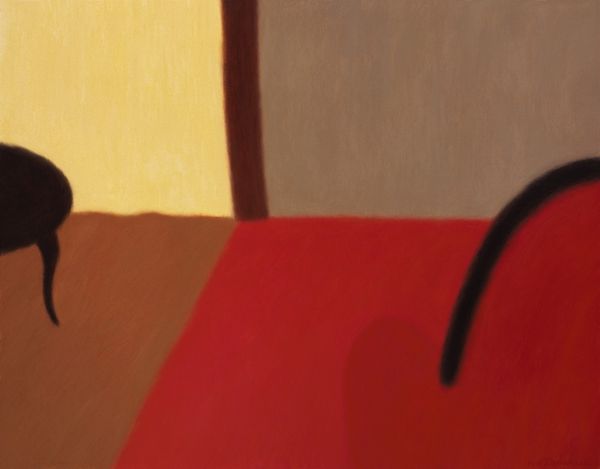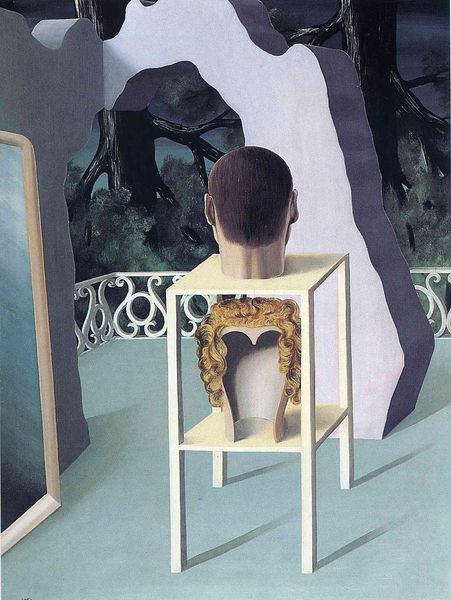
painting
#
portrait
#
figurative
#
contemporary
#
painting
#
figuration
#
animal portrait
#
genre-painting
#
portrait art
#
fine art portrait
#
realism
Copyright: Modern Artists: Artvee
Curator: This is Zoe Hawk’s “Natural History” from 2018. It's an oil painting. Editor: I'm immediately struck by its stillness. There's a quiet formality to the composition, a kind of frozen narrative playing out. Curator: Absolutely. Hawk's work often depicts groups of girls in staged, theatrical environments. Think about the implications of this museum space as a carefully curated world, a constructed vision of nature. The girls, themselves, are almost like specimens on display in their matching uniforms. Editor: Precisely, the repetition of the mauve uniforms against the subdued background flattens the picture plane. Note the stark contrast with the girl looking upwards, an anomaly in the scene, which could symbolize the breaking from established norms, or a reflection of a higher calling. Curator: I agree. The architecture of the painting, with its rigid lines and symmetrical arrangement of the girls viewing the animal dioramas, underscores the theme of imposed order versus something perhaps less contained. This tension between the natural world presented as specimen versus free-range beings... Editor: Furthermore, the gazes create lines and triangles which guide the eyes and invite analysis. A grid system is revealed. Does this enhance the overall meaning of what a natural history exhibit portrays? The real, the dead, presented as educational and meaningful? Curator: Exactly. The painting acts as a metaphor for systems of knowledge, how we categorize and control nature. The colors are muted, almost faded, as if the life has been drained from these environments. Editor: It’s fascinating to consider Hawk’s choice to position the viewer at eye level, placing us directly within the composition, as either participant or observer in a carefully considered game. Curator: It is worth considering the girls’ reactions. They betray very little expression, giving rise to ambiguity. This open-endedness asks questions of us as to how these imposed, regulated, formalized systems affect younger generations in educational environments. Editor: A very concise summary. Thinking on it now, it causes one to reevaluate these kinds of staged learning environments.
Comments
No comments
Be the first to comment and join the conversation on the ultimate creative platform.
